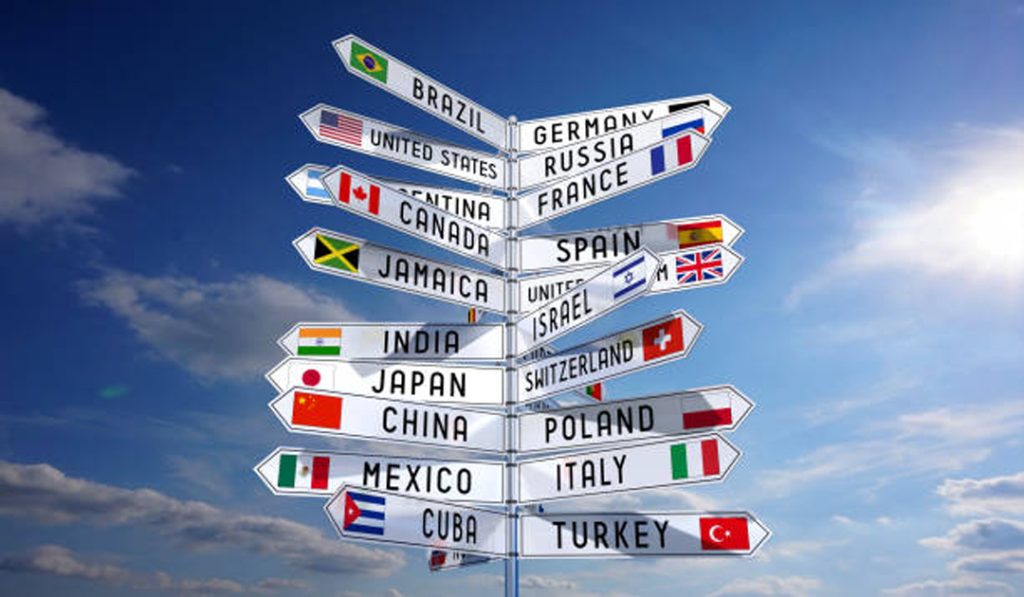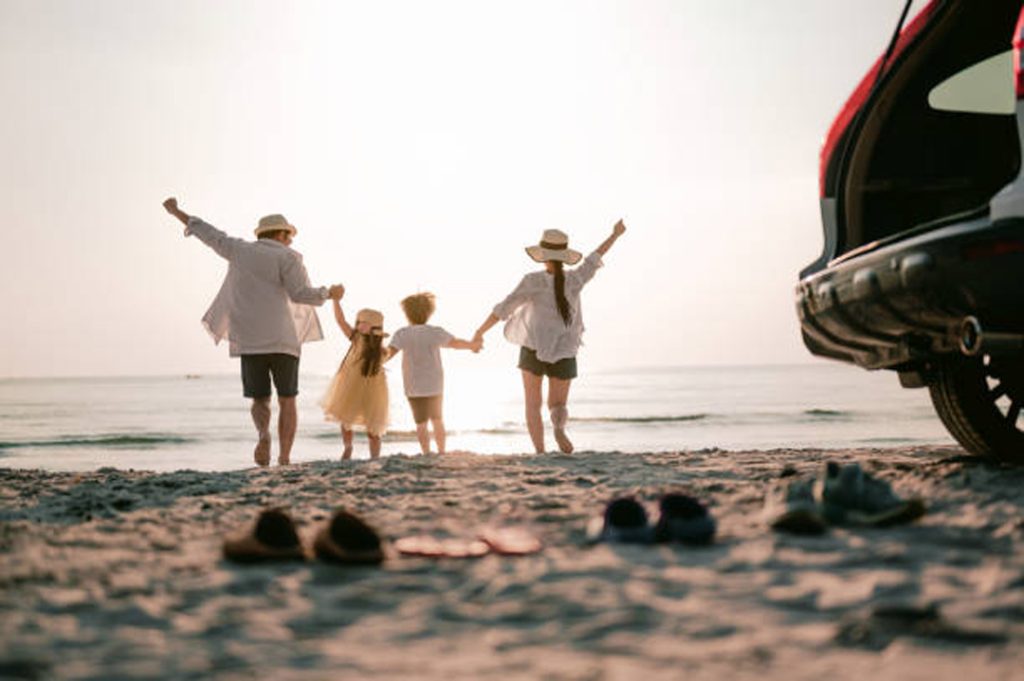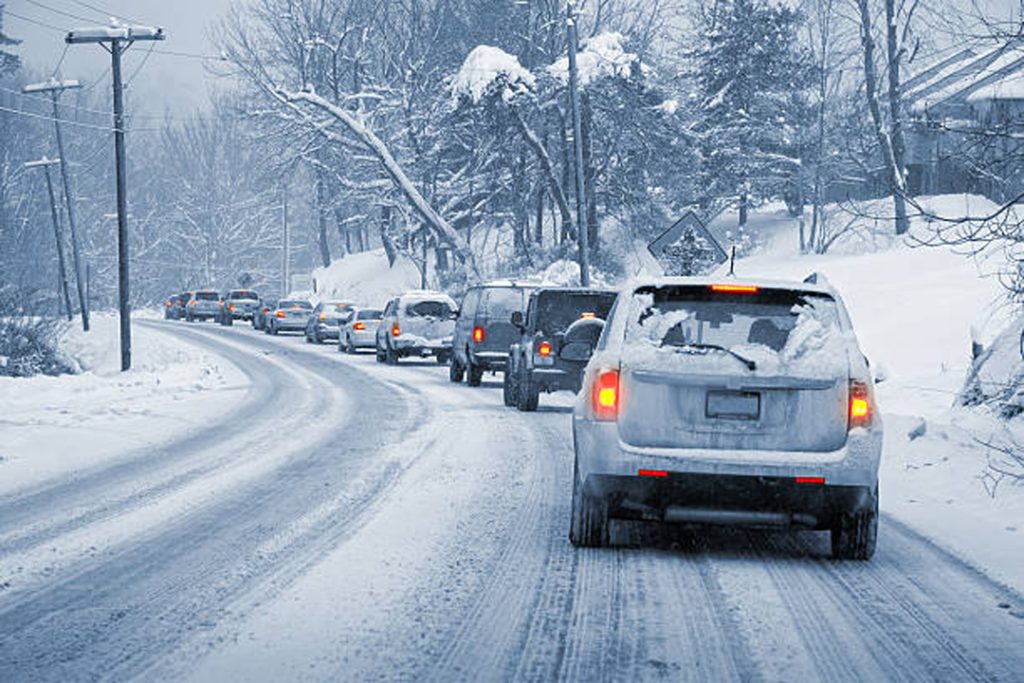
Where do you most want to go in this fascinating world? Since identifying your favorite destinations is essential to a fulfilling trip, look first inside, not out. Before starting to name possible destinations, forget about self-imposed limitations and answer two questions:
What kinds of experiences do you want? And
What do you want to gain from the trip?
What would you be doing? Would the days be peaceful, or would they be full of activities? Would you be alone or meeting lots of other people? Do you lust for fine food, sensuous beaches, wildlife, spectacular landscapes, physical challenges or do you seek insights and internal change, perhaps a new direction for your life? Choosing a purpose for your trip and writing it down helps you get in touch with your feelings and gives you something to review when you get back. Your answers enable you to think about where to go without being influenced by the popularity of a destination or a desire to impress people.
The moment you’ve made up your mind to go somewhere, the most difficult part of the trip is behind you. You’ve overcome inertia and the risk of doing nothing.
Choosing where you really want to go
Many people choose destinations on the basis of beautiful scenery, climate, and available activities. Or they’ve been to a place before and liked it, or they have a friend or spouse who wants to go there. They’re concerned about affordability, health, and personal safety and want to avoid unsanitary hotels, attempts by “locals” to rip them off, bad weather, extreme poverty, high costs, and tourist traps. No surprises there.
These are reasonable criteria but 1 urge you not to settle for some destination just because it meets them. Make your choice of destination more personal. Close your eyes and conjure up the names of places that make your heart beat fast. Brainstorm. Think of cultures that appeal to you, parts of the world with a history that fascinates you, less-traveled places that have beckoned since childhood. What places offer the adventures, weather, or scenery you most enjoy? Whose art and music do you love? List every one of these places without worrying about practicality.
Next, prompt your memory with a world map. Continent by continent, country by country, add new places to your list. Read travel books to stimulate your imagination. Skim back copies of National Geographic, Outside, International Travel News, and Conde Nast Traveler. Attend local travelogues. Watch the Travel Channel, the Discovery Channel, and “National Geographic Explorer.” Seek out travel tales from friends and travel agents.
Make a list of destinations, then group your choices by continent or geographic region. Post this list on the refrigerator or bathroom mirror, anywhere that will keep it in your consciousness. After you’ve lived with this list for a while, cut it to a dozen or so magic places. With your original objectives clearly in mind, rank them and let the following factors influence your decision.
Factors to Consider
At this point, practical considerations should begin to affect your choice of destinations: Would you prefer to survey many Countries or to focus on a single country or region? Are political conditions a problem at any of the destinations on your list? Would a certain destination present more of a mental or physical challenge than you want? Would local language seem to be a deterrent?
One Country or Many?

The differences between a survey trip through many countries and a trip that focuses on a single country or region are substantial. If you have just a week or two, a tightly focused trip, dealing with only one language, one transportation system, and one culture, may be ideal. In general, your daily costs of transportation, lodging, and food are lower when you spend more time in one place. On the other hand, a multi-country trip is like a buffet table loaded with rich and varied dishes, many of which will be new to your palate. It requires more effort and a faster pace to sample everything on the table.
A tightly focused choice might be a trip to London with side trips to Cambridge and the Cots wolds, or a trip to Cuzco that includes hiking the Inca Trail and wandering in the sacred valley of the Urubamba. A multi country trip might take you cross-country from Amsterdam to Athens, or overland from London to Lagos or maybe from Kathmandu to Kalimantan.
Either type of trip can be rewarding but, to make an informed choice, understand that they differ.
Political Conditions
Research the political situation at destinations you’re considering. It was risky to visit Chile during the decades in which the Pinochet military dictatorship governed. However, Chile had its second modern democratic election in 1994 and is again one of the world’s most rewarding and safe destinations. While conditions in Kashmir, Colombia, and Mozambique may not be as dangerous for travelers as media reports suggest, it’s better to defer trips to places like these until things quiet down. Sri Lanka is wonderful, but I’m not going back until the overcome the recession. Even the excitement of visiting mountain gorillas in Rwanda isn’t worth being caught in a fire fight between Hutus and Tutsis. When the welcome mat has blood on it, think twice about crossing the threshold.
Mental and Physical Fitness

There are times on the road when you won’t know exactly what’s happening, or why, or what will happen next. Ask yourself how much input you can handle from cultures very different from your own, and for how long. If your tolerance for ambiguity is low, you may prefer traveling in Western-style cultures until you’re a more seasoned traveler.
Physical fitness should also affect your decisions. Don’t underestimate the rigors of walking the halls of art museums and galleries in Paris for a week, let alone visiting dozens of Egyptian temples and tombs. Where heat, altitude, or exertion will be factors, be honest with yourself about the physical condition required. If you’re considering trekking in the Zanskar Valley or to the summit of Kilimanjaro don’t think in terms of how fit you were when you were eighteen, or how fit you could be if you worked out for three months. Think of how fit you actually will be when you board the plane.
Decide how much exertion you want to handle. For some, making a strenuous effort is part of the reward; achieving a goal and the ensuing fitness are worth a little pain. Others prefer a more languorous trip. At the beginning of your international travel life, err on the side of caution and stay well within your capacity. After a trip or two, you’ll know much more about what you can, and choose to, handle. At that point, you may want to test yourself a bit.
As departure date approaches, step up your physical conditioning a notch or two. Unless you’re already fit, consider walking a brisk three miles a day three times a week for six or eight weeks before you go. It’s like preparing for the ski season; it’s mostly a matter of building up your legs and stamina. No need to let sore muscles take you out of action.
To the extent it’s connected to fitness, age is a consideration but need not be a deterrent. I’ve met many travelers well beyond their mid-sixties. Aboard a bus in steamy Tamil Nadu,§ I leaned across the aisle and struck up a conversation with a sturdy, white-haired woman who looked to be about sixty-five years old. As we got off the bus, 1 swung my backpack down from the overhead rack and asked if I might help with hers. She thanked me and suggested we have tea.
I wasn’t surprised when she said she’d been a British civil servant for more than forty years, but I was amazed when she told me the rest of her story. She’d just completed a solo bicycle ride the entire length of India and, several years earlier, had ridden more or less around the world. She exemplifies the point that age need not be a disqualification when the flame is burning brightly Ben Franklin said that “Travel is one way of lengthening life,” and few activities keep a person feeling as young as does independent travel.
The more remote reaches of the world are not very accommodating to persons with physical handicaps. Nevertheless, I’ve met people traveling successfully with what seem to be fairly severe physical handicaps. It can be done; it’s just more of a hassle. In the Bibliography I’ve listed several publications that provide information on traveling with various disabilities.
Local Languages
Since we humans use more than fifty-eight hundred different languages and dialects, some prospective travelers may worry about inability to communicate. They needn’t. First, English is rapidly becoming a global language. Second, where English is not spoken there’s plenty of help available in the form of pocket-size dictionaries and phrase books with functional sections containing words for shopping, asking directions, ordering meals; and changing money. Third, language training courses on cassettes and accelerated language classes in community colleges can bring you up to speed quickly. Fourth, even when you have absolutely no language in common, it’s amazing how much can be communicated nonverbally. Sure, it’s sometimes more difficult than talking across the back fence, but lack of familiarity with a foreign language should not deter you from going somewhere you really want to go.

If you take a cross-country trek out of Iquitos, Peru, with several Aymara Indians, your inability to speak Spanish or Quechua won’t matter much though you will miss out on stories told around the campfire. In more populated areas, say Portugal or Germany, lack of knowledge of the local language can make handling daily details a bit difficult, but a few phrases and a couple of dozen words will get you by anywhere. You need not avoid non- English-speaking destinations.
A few final thoughts about destinations. If your interests are in less developed countries, expect to invest more effort than if you travel to places such as England, France, or Sweden. Rather than staring passively at marble sculptures and cracked paintings, your trip is likely to be more active, focusing on wild animals, magnificent landscapes, and the people of unique cultures.
Also, be aware that some places on your list may bear little relationship today to the romantic images established in literature from an earlier age. For me, such places include Buenos Aires, Cairo, Casablanca, Papeete, Singapore, and Timbuktu. Ladakh (in northern India), Nepal, Sri Lanka, and Thailand are still jewels, but they’ve lost a little of their luster in recent decades as they’ve become more widely known. Up-to-date information will help you make better choices.
Lastly, if this is your first overseas experience, the turmoil of India or the travails of Zaire may be a bit much. Or maybe not. Just be clear about how big a bite you want to take the first time out. If you feel uncertain, take an easier trial run. After all, you have a lifetime of trips coming up.
Timing
If you feel locked into taking a trip during a specified period by an employer, kids, school, or whatever the following factors may also influence your choice of destinations. If you’ve already chosen a destination, they’ll help you know what to expect. If you have flexibility as to when you go, these factors should definitely affect where you go.
Weather
On a world where climatic temperatures range from above 130 degrees to below minus 130 degrees Fahrenheit, and monsoons and drought are common, weather always matters to some degree. It may determine your timing, especially for activities such as skiing, trekking, and hanging out on a beach. If it’s not possible to go someplace when the weather there is ideal, at least avoid extremes in temperature and rainfall. If you can travel only at a certain time of year, find out what weather to expect so you’ll be prepared.

Does continuous rain get you down? A rousing thunderstorm may be exciting, but dark skies day after day dampen most spirits. In many countries, heavy rains close the roads and transform trails into slick, muddy chutes.
Altitude affects local weather. As you slowly melt into a puddle in the steamy Kenyan port of Mombasa, people are cool in nearby Nairobi on its high plateau. Even in tropical countries, temperatures can be very cold at high altitudes.
Continents tend not to have a single, predictable climate. For example, Europe has three distinct climate zones, north to south. In Africa, dry deserts in the north and south flank hot, wet tropics in between. On high plateaus, where nature preserves such as Masai Mara are located, temperatures are moderate, even during summer, because of the altitude. Also keep in mind that seasons in the Southern Hemisphere are the reverse of those in the Northern Hemisphere.
Asia ranges from a severely cold, dry arctic climate in the far north to excruciatingly hot summers in the southwest and monsoons in India. If generalizations hold, expect greater extremes of temperature inland and more rainfall on coastal areas. November to March is a relatively cooler period in Southeast Asia, while the rest of the year is likely to be rainy and humid. Monsoons are more common in June and July. Find out when they occur at your destination and avoid them.
In South America, the summer season comes during winter in the Northern Hemisphere. Summer in the lowlands is extremely hot and humid but destinations at high altitudes, such as much of Peru, almost never experience extreme heat.
A hard-core traveler with a passion for a certain place will go when the opportunity arises, even if that may mean hell and high water; after all, people living there get through it. But why suffer if you have a choice? Tamil Nadu is renowned for friendly people, unique dance performances, and spectacular temples, but why visit in May when heat and humidity will muddle your brain? Go to countries on the Mediterranean Sea in May when weather there is at its best. Why walk the beautiful trails in Nepal in March when pouring rain quenches your spirit and mists conceal the great peaks? Go in September when it rains least and visibility is best.
In the wet season, when they can find drinking water anywhere, wild animals scatter all over the African landscape. That means you can spend hours searching for them. In the dry season, animals must go to the few remaining waterholes where you await them with your camera.
Since the timing of wet and dry seasons, as well as the temperature, differs region by region, you need specific information. The following are useful resources:
- The U.S. Department of Commerce Climates of the World booklet, available from the Government Printing Office (GPO), reports average precipitation by month in cities around the world. However, average temperature and rainfall reports are not as helpful as they should be. What you need are highs and lows.
- The GPO also publishes National Weather Service reports on international climates.
- Some guidebooks have good information on weather.
- Good travel agents and tour operators are familiar with international weather.
- The Current Conditions section in the back of Conde Nast Traveler magazine provides information on the climate (temperature highs and lows, humidity, rain, and so on) in different destinations.
- Call The Weather Channel Connection at (900) WEATHER (932- 8437). The cost is ninety-five cents a minute.
- Local newspapers give daily high and low temperatures for fifty or so cities around the world.
- Call American Express at (800) 554-2639 for worldwide weather reports and forecasts.
- National tourist offices can be good sources but, because they promote tourism, it’s wise to be a little skeptical of their reports.
For example, the tourist office in Panama denies the existence of a rainy season. It admits only to a “Green Season.” Oh, sure.
Tourist Seasons
Because crowds of tourists rank with monsoons as things to avoid, know when the tourist high season begins and ends at a potential destination. In general, it’s June through September in the Northern Hemisphere, including Europe, and November through February in the Southern Hemisphere, but there are exceptions. The tourist high season may not always coincide with the best weather. Instead, it may reflect the time of year when most people are free to travel.
Crowds change every travel experience almost always for the worse. Limited facilities become crowded in high season and local people become noticeably less congenial. Prices go up, sometimes tripling. Avoiding tourist high season should be a major factor in planning.
When your ferry ties up to the wharf in Lamu, Kenya, in May, a swarm of young men compete to guide you to a fine hotel room overlooking the water or take you out in their sailing dhows. Prices are rock bottom. If you arrive in December, you’ll find the tiny hotels packed and you’ll have to pay whatever is demanded. Now, I ask you?
If you can’t avoid high season, keep your sanity by visiting popular tourist sights very early in the morning or as late as permitted in the evening. Take a leisurely stroll while tourists are still wolfing down heavy breakfasts, then hole up in a museum during the heat of the day. Shoulder seasons, on either side of high and low, are often the best times to visit.
Local Holidays, School Recesses, and Special Events
Local holidays and school recesses create their own high season, with the majority of travelers being local people. The moment school is out, young people and families hit the road. Since local people know those dates, they book transportation and accommodations far in advance.

If you’re committed to participating in the running of the bulls or watching the World Cup, make preparations well in advance. Watch for major events like these so you can incorporate them into your planning, one way or the other. Find out about special events through tour brochures, guide books, national tourist offices, travel agents, and Culturegrams.
The first time I tried to get to the Island of Zanzibar from Tanzania, I forgot that religious restrictions of the Islamic period of Ramadan were ending and joyful celebrations beginning. The few planes and cross-channel boats were packed with people seeking pleasure after an ascetic month. I never did get to Zanzibar, but I could have if I’d left a couple of days earlier.
0 Comments